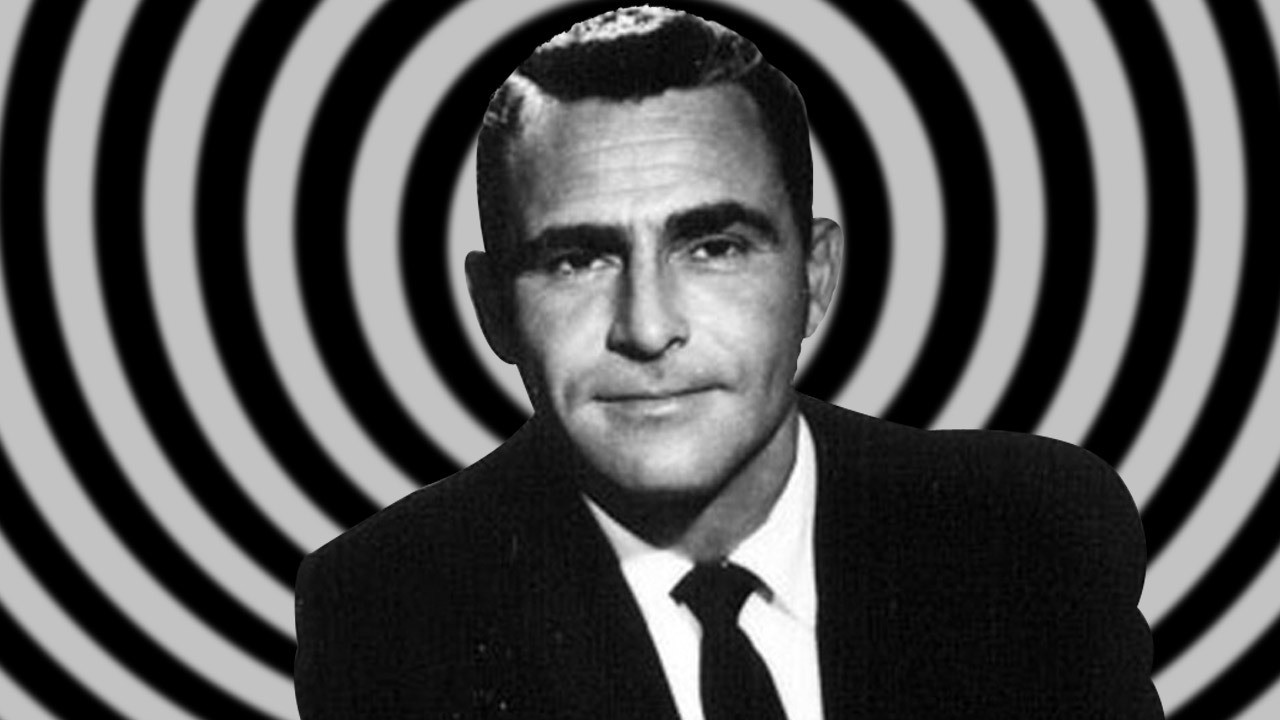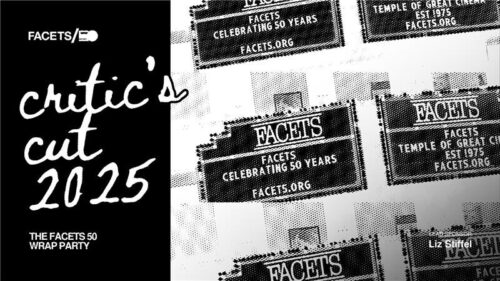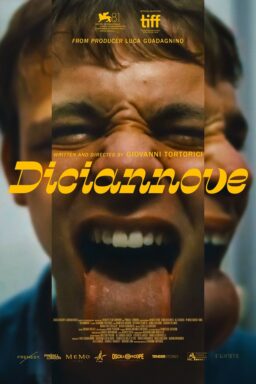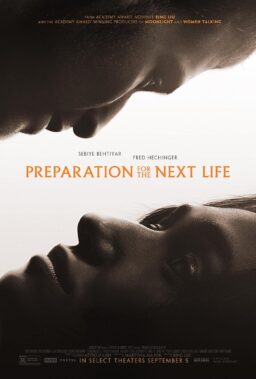For years, Rod Serling’s “The Twilight Zone” worked in many moods and genres, from gentle magic realism to cosmic horror. Next month, Jordan Peele is bringing a revival of “The Twilight Zone” to CBS All Access. This will be the third revival of the show after one in the eighties and a very briefly lived attempt in the aughts. The trailers for Peele’s version look promising and it’s always a welcome opportunity to point those who are curious toward the original show.
Below is just a brief sampling of what the show could do. The episodes chosen here for no more reason than they are the ones that have stayed with me and I think about the most.
“Two” (Season 3, episode 1). In time after a devastating nuclear war the last man on Earth (Charles Bronson) finds out he’s not alone one day while making his rounds when he stumbles across another survivor (Elizabeth Montgomery). Unfortunately she is from the opposite side of the war that destroyed all human life on the planet. That the two will eventually reach accord is for granted, but it’s a terrific nearly wordless episode watching the pair get there. If you’re familiar with Bronson and Montgomery for their later work as a tough action movie bruiser and Montgomery as the perky witch housewife on “Bewitched,” both play fascinatingly against those roles. By turns tough and tender, Montgomery in the more difficult role of having no dialogue says pages with a suspicious flick of the eyes, or a hard won wary smile.

“The Obsolete Man” (Season 2, episode 29). Don’t you wish anti-fascist parables could stop being described with the phrase “surprisingly timely”? In a totalitarian society a librarian (Burgess Meredith) is judged obsolete by a tribunal led by a merciless Fritz Weaver. Weaver has underestimated Meredith’s courage, and cunning, and on a visit to gloat at the man’s impending death he finds himself locked in Meredith’s apartment, forced to share the man’s fate unless he relents and admits that their might be more to life, and the universe than the hard, inflexible code he has destroyed society with. Meredith turned in several iconic performances on “The Twilight Zone” but my favorite is his librarian in “The Obsolete Man,” the quiet resistance of free will and the soul that gnaws through the root of fascism.
“Third From the Sun” (Season 1, episode 14). Fritz Weaver got a turn to be the hero in this episode as a scientist trying to save his family from war that will destroy the planet. Time is running out for their escape, and they’ve attracted the attention of an oily coworker (Edward Andrews) who loves needless destruction almost as much as he hates the idea of refugees fleeing to safety. A remarkably tense thriller for its 30 minutes, the dread of discovery handing over them as sure as the dread of destruction when the bombs start falling. Andrew’s villain is another “Twilight Zone” character that’s gained an uncomfortable sheen of the timely. His eyes gleaming for fire and fury simply because they have the means to.
“Little Girl Lost” (Season 3, episode 26). Spielberg directed one of the segments of the “Twilight Zone” movie in 1983 and the show’s influence on his work is seen clearly in this episode. “Little Girl Lost” is effectively the latter half of Spielberg and Tobe Hooper’s “Poltergeist” done in half an hour. A little girl falls through a dimensional warp in her room into a strange out of time and space plane and her parents and a neighbor have so much time to find her and bring her home before the doorway closes for good. “Little Girl Lost” is exceptional for showing how “The Twilight Zone” could take the sets and budgets of sixties television and make something that truly felt otherworldly out of them.

“A Hundred Yards Over the Rim” (Season 2, episode 23). The lengths parents will go to aid their children is illustrated another way in this story of a father who accidentally stumbles into the future. Cliff Robertson plays the leader of a nineteenth century wagon train whose son is dying. Hoping to find water over the next ridge he walks ahead to discover he’s walked a hundred years into the future. The past and present being one is a frequent theme of “The Twilight Zone” and this is one of its better variations. Robertson’s shock and fear quickly give way to desperately trying to find any kind of aid for his son and to get back to him.
“The Monsters are Due on Maple Street” (Season 1, episode 22). This is perhaps the episode that should be shown in high school history and civics classes as a warning and a rebuke to being ruled by fear. It’s also a glum reminder of how at the end of the day we are more than capable of destroying ourselves from the inside than from any perceived outside threat. Divide and conquer is a devastating strategy because it works. And there’s a helplessness watching a suburban neighborhood turn on each other in how little we’ve progressed and in many ways regressed since that episode originally aired.
“The Hitch-Hiker” (Season 1, episode 16). The simple story of a young woman (Inger Stevens) dogged by a mysterious figure (Leonard Strong) who turns out to be Death could be a cold tale of the inevitability of life’s end. But a curious grace is allowed to slip into it stealthily. Strong’s Death is frightening, able to appear out of nowhere and refusing to be left behind at a series of loney gas stations and cafes on a desert road far from anywhere. But he does not attack Stevens or drag her into the dark unknown. But rather he waits, for her to realize she is no longer among the living. After a fateful phone call Stevens wanders back to her car, her voice over remarking that all she feels now is a strange peace. And when she looks into the rearview mirror of her car she sees Strong in the backseat. Death is quiet and still, wearing a reassuring smile. And as shows become entwined with our own personal histories, I first saw this episode after a beloved grandparent died. It’s become a touchstone ever since to deal with the ache of loss. Not the easiest assurance of what, if anything, lies on the other side. But the hope that death is just another stop on the road.

“Nothing in the Dark” (Season 3, episode 16). Death personified was a frequent theme on “The Twilight Zone” and the old woman (Gladys Cooper) terrified of death who reluctantly takes in a wounded policeman (Robert Redford) might be another episode where the end of the story is clear. But the pleasure lies in watching Redford gently coax the old woman into realizing that her fear of death is also what’s kept her from living. And that if we acknowledge the end of life as part of its process it stops being the boogeyman and becomes something we can live with, however long we have on this earth.
“One for the Angels” (Season 1, episode 2). “The Twilight Zone” told stories of people who tried to outrun death, who feared death. But one of the most humane and lighthearted episodes is a story about someone who outwitted death. Almost. A salesman (Ed Wynn) makes a deal with Death (Murray Hamilton) to not take him until he’s made the one perfect sale. Hamilton agrees and Wynn promptly retires. Not to go home empty handed Death is about to take a sick little girl in Wynn’s building instead when Wynn decides that maybe he’s got one more sale in him left after all. The generosity of characters, often small time operators and ordinary people not marked by any great destiny, that transforms them into heroic figures even if only for one hot summer night is an enduring pleasure of the show. In an age of Prestige TV that trades in cruelty and cool indifference there is something irresistible in a show that said over and over again as selfishness could damn you so could empathy save you. That was the real lesson of “The Twilight Zone”: That unknown, unreachable place is in all of us. Whether it was a place of terror or wonder depended entirely on how willing we were to go into it with our hearts and minds open.
To read Brian Tallerico’s list of five “Twilight Zone” episodes you should watch in preparation for Jordan Peele’s reboot series, click here












